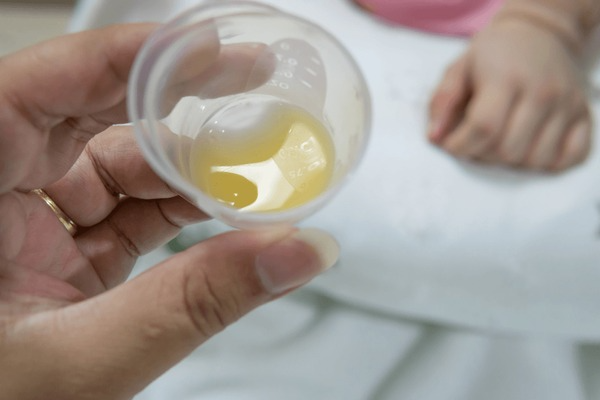Breastfeeding Latch Issues? Here’s How to Fix a Poor Latch

Many new moms face challenges with breastfeeding latch problems. A poor latch can cause discomfort and make feeding hard. But, with the right help, you can fix this and enjoy nursing without pain.
The American Academy of Pediatrics says a good latch is key for comfy breastfeeding. It takes time for both mom and baby to get it right. With patience, babies can learn to latch well, easing breastfeeding troubles.
To fix a poor latch, you need to know the signs and how to fix them. This can help solve breastfeeding issues. In this article, we’ll cover how to spot a bad latch and how to fix it. We’ll also give a step-by-step guide to help you overcome common breastfeeding problems.
Key Takeaways
- A poor latch can cause discomfort, pain, and difficulty in feeding the baby, leading to breastfeeding latch problems and poor latch issues.
- Practicing a proper latch is essential for comfortable breastfeeding and can help resolve breastfeeding issues.
- Many babies experience difficulty latching on to the breast for the first few days after birth, but can master the skill with patience and persistence, reducing breastfeeding latch problems.
- Understanding the signs of a poor breastfeeding latch is critical to addressing breastfeeding issues and fixing a poor latch.
- A step-by-step guide to fixing breastfeeding latch problems and poor latch issues can help mothers overcome common breastfeeding issues and achieve a comfortable nursing routine.
- Proper latch techniques can lead to increased milk supply and comfort for both mother and baby, reducing breastfeeding latch problems and poor latch concerns.
Understanding the Signs of a Poor Breastfeeding Latch
It’s important to know the signs of a poor breastfeeding latch. A bad latch can cause breastfeeding discomfort, nipple pain, and make feeding hard. Spotting these signs helps fix the problem and get a good latch.
A baby’s reaction to a bad latch is a clue. They might fuss, root, or make clicking sounds while feeding. Moms might feel pain or struggle to feed, which also points to a bad latch. By noticing these signs, moms can change how they breastfeed to get it right.
Some key signs of a poor latch include:
- Nipple pain or bruising
- Difficulty in feeding the baby
- Clicking noises or fussing during feeding
- Rooting or other unusual baby behaviors
It’s key to fix signs of poor latch quickly to avoid bigger problems like cracked nipples or mastitis. By spotting and fixing a bad latch, moms can make breastfeeding comfortable and successful for both themselves and their babies. They should pay close attention to the baby’s response and the overall breastfeeding experience.
The Importance of Achieving a Proper Latch
A proper latch is key for good breastfeeding. It makes sure the mom is comfortable and the baby gets enough milk. This latch is vital for the baby’s growth and health.
It also helps the mom’s breasts make more milk. This milk is full of nutrients for the baby.
The importance of proper latch is huge. It greatly affects breastfeeding benefits and the baby’s health. Here are some signs of a good latch:
- The latch being comfortable and pain-free
- The baby’s chest and stomach resting against the mother’s body
- The baby’s chin touching the breast
- The baby’s mouth opening wide around the breast, not just the nipple
WIC (Women, Infants, and Children) offers help for moms. They assist in getting a proper latch and solving breastfeeding issues. By focusing on the importance of proper latch, moms can have a better breastfeeding experience. This is good for the breastfeeding benefits and the baby’s health.
Common Causes of Breastfeeding Latch Problems
A proper latch is key for a good breastfeeding experience. It ensures the mother’s comfort and the baby’s nutrition. Yet, many mothers struggle with latching, causing discomfort and worry. Knowing what causes latch problems is important to solve them.
Things like flat or inverted nipples can make latching hard. Also, positioning issues, like leaning over the baby, can cause pain and affect the latch.
Understanding these causes helps mothers find solutions. For example, anatomical factors can be helped with nipple shields or advice from a lactation consultant. Positioning issues can be fixed by changing how the mother sits or using pillows for support.
By knowing the common causes of latch problems, mothers can act early to prevent them. This includes being mindful of anatomical factors and positioning issues that might impact the latch. With the right help and advice, mothers can overcome these hurdles and enjoy a smooth breastfeeding journey.
Step-by-Step Guide to Achieving the Perfect Latch
A perfect latch is key for a good breastfeeding experience. A step-by-step guide can help moms fix common latching problems. First, place the baby right, with their mouth on the nipple. Also, support the breast and help the baby latch for a perfect latch.
A good breastfeeding technique means the baby should take in 1/3 to 1/2 of the areola. This is important for milk transfer. By following a step-by-step guide, moms can get a proper latch and enjoy nursing. Some important tips include:
- Make sure the baby’s mouth is wide open before latching
- Use a nursing pillow or hand to support the breast
- Help the baby latch by gently stroking their cheek or lip
By learning the breastfeeding technique and following a step-by-step guide, moms can solve latching issues. It’s important to be patient and ask for help if needed. A perfect latch makes nursing comfortable and enjoyable.
Essential Positioning Techniques for Better Latching
Positioning is key in breastfeeding for a good latch. A proper latch helps the baby feed well and keeps the mother comfortable. The cradle hold is a common method, where the baby is held straight.
The cross-cradle position is also popular. It’s great for small or premature babies. It lets the mother support the baby’s head and body for a deep latch. It’s also good for C-section moms, as it keeps the baby close without hurting the incision.

Other methods like the football hold and side-lying position can also work. These positions ease the strain on the mother’s body. They make breastfeeding more comfortable and enjoyable. Using these techniques can help mothers get a good latch and enjoy breastfeeding.
When to Seek Professional Help
As a new mom, knowing when to ask for help with breastfeeding is key. About 75% of moms face latch issues early on. If you’re having trouble, a lactation consultant or breastfeeding support can offer personalized help.
A lactation consultant can find out why you’re having latch problems. They give advice to help you nurse comfortably and feed your baby well. Studies show moms who get help from lactation consultants are 3 times more likely to breastfeed successfully.
Signs you might need help include nipple pain, engorgement, or plugged ducts. If you’re dealing with these, contact a lactation consultant. They can help you find a solution and get a good latch.
Knowing the benefits of a good latch is also important. A proper latch can lower the risk of breastfeeding problems by up to 70%. Getting help and working on a good latch can make breastfeeding better for you and your baby.
Some main benefits of getting help for latch issues include:
- Personalized guidance and support from a lactation consultant
- Tailored advice to overcome breastfeeding latch problems
- Increased chances of successfully establishing breastfeeding
- Reduced risk of breastfeeding complications
- Improved overall health and well-being for both mother and baby
Remember, asking for help is a sign of strength, not weakness. Don’t hesitate to seek support if you’re struggling with breastfeeding latch issues. With the right help, you can overcome challenges and enjoy a fulfilling breastfeeding journey.
Tools and Resources for Improving Latch
Improving the latch is key for a good breastfeeding experience. Luckily, many tools and resources are out there to help. They offer support, comfort, and guidance, making breastfeeding easier.
Nursing pillows and nipple shields are essential. They help find a comfy position and protect nipples from pain. Books, online tutorials, and lactation consultants also offer valuable advice on breastfeeding.
These tools and resources can greatly improve breastfeeding. For instance, nursing pillows reduce back and neck pain. Nipple shields protect nipples and prevent pain, which is helpful at first. Educational resources give mothers the knowledge and confidence to tackle breastfeeding challenges.
There are more products to help with latch improvement. Breast shells protect nipples, and lactation cookies boost milk production. Using these tools, mothers can overcome breastfeeding hurdles and enjoy a successful experience.
Some key benefits include:
- Improved latch and breastfeeding technique
- Increased comfort and reduced pain
- Enhanced confidence and knowledge
- Support and guidance from lactation consultants and online resources
By using these tools and resources, mothers can face and solve breastfeeding challenges. Whether it’s a nursing pillow, nipple shields, or educational resources, there’s a lot to help improve latch and reach breastfeeding goals.
Self-Care Tips During Latch Correction
When fixing a poor latch, self-care tips are key to handle stress and pain. This time can be tough for moms. It’s vital to take care of their body and mind. By using physical care measures and getting emotional support, moms can get a good latch and enjoy nursing.
Important self-care steps include easing nipple pain. This can be done with warm baths, cold compresses, or creams. Also, getting emotional support is helpful. Talking to a lactation consultant or joining a breastfeeding group can offer guidance and reassurance.
Some good self-care tips for moms during latch correction are:
- Try relaxation methods like deep breathing or meditation to lower stress.
- Ask friends and family for emotional support and help with daily chores.
- Make sure to get enough rest and sleep to help your body heal from breastfeeding.
- Seek help from a lactation consultant or healthcare provider if problems persist.
By focusing on self-care tips, physical care measures, and emotional support, moms can face latch correction challenges more easily. This leads to a comfortable and successful breastfeeding journey.
Success Stories: Real Mothers Share Their Latch Journey
Many real mothers have overcome breastfeeding latch problems. They share their success stories to inspire others. These stories offer valuable insights and tips for a comfortable nursing routine.
Seeking help is a key part of the latch journey. Some mothers looked for help as early as 5 days after birth. Others faced challenges like tongue ties and overproduction issues. Yet, many found success with lactation consultants and proper techniques.
Some success stories include mothers who breastfed for 17 months. They overcame nipple damage and other complications. Their babies also gained significant weight. These stories show the importance of emotional support and guidance from lactation consultants.
Many mothers saw immediate improvement after releasing tongue and lip ties. Their babies fed better without leaking or getting tired easily. The Thompson Method has also been effective, with 100% of mothers overcoming latching issues and successfully breastfeeding. These success stories prove the power of perseverance and proper technique in the latch journey.
Conclusion: Your Path to Comfortable Breastfeeding
Remember, you’re not alone in the journey to a proper breastfeeding latch. Over 50% of new moms face latch issues in the first weeks. But, with the right help and support, you can beat these challenges and enjoy nursing.
Understanding why latch problems happen is key. It could be because of how your body is made, how you sit, or health issues. Using tools like nursing pillows and getting help from experts can really help.
If you’re having trouble, don’t be shy to ask for help. A lactation consultant or your doctor can be a big help. Studies show that 90% of moms keep breastfeeding longer with the right support for latch issues.
Every mom’s journey with latch problems is different. It might take time and effort to find what works best for you. But, with the right mindset, help, and resources, you can make breastfeeding comfortable for you and your baby.






